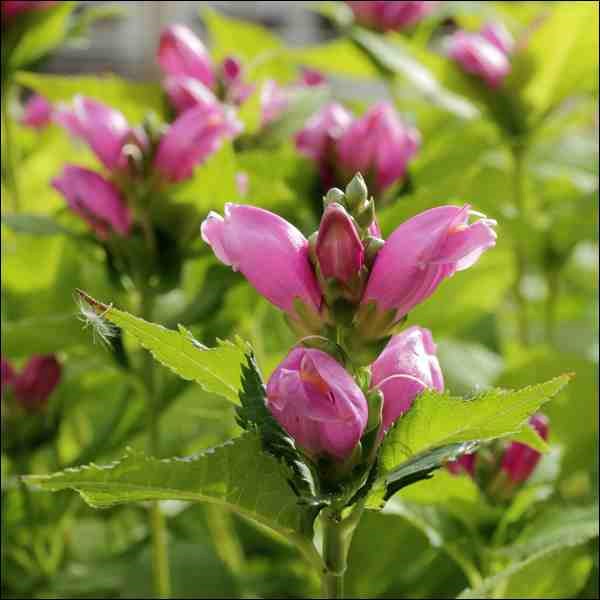Has your garden fizzled for the year? Are you left with just tired annuals and perennials that have long gone to seed? If this is you, here are a few perennials (in addition to last week's suggestions) to help your garden continue to dazzle into the fall.
Turtlehead (Chelone spp.) is so named because the flower resembles the blunt head of a turtle (you'll need to use a bit of imagination). Sturdy bushy plants reach two to three feet in height by 1.5 to two feet wide. Leaves are medium to dark green setting off the spikes of lighter-coloured flowers (white, deep pink or hot pink). It will adapt to average soil moisture conditions but grows best in moist to wet conditions such as next to a water feature or stream. Turtlehead is also adaptable to light levels, from full sun to part shade.
Heliopsis or false sunflower (Heliopsis helianthoides) is a tall (three to four feet), clump-forming (1.5 to threefeet wide) perennial (compact cultivars are available). Golden-yellow daisy-like flowers overtop medium green foliage. Depending on cultivar, flowers may be single or semi-double. There are also variegated cultivars with nearly white leaves and dark green veins (Loraine Sunshine) or pink, white and green leaves (Summer Pink). Like its name suggests, full sun is best, requiring average to moist soil. Taller cultivars may need staking.
There are a number of rudbeckia (Rudbeckia spp.; aka coneflower, gloriosa daisy, black-eyed Susan) species that are grown on the prairies. Most are treated as annuals; however the fulgida species is reliably hardy. Cultivars of this species range in height from one to three feet and spread up to two feet in diameter. Flowers are single yellow-gold daisies with dark brown centres. Plant in full sun to part shade in average to moist soil. Leave the seed heads for winter interest and to attract birds.
Goldenrod (Solidago spp.), not to be confused with ragweed, is well-behaved perennial rarely reaching more than two feet tall or wide. Golden plumes of flowers top dark green foliage. Full sun is best in average soil moisture. The only drawback is that some self-seeding may occur; however, hybrids like Crown of Rays are less prone to this issue.
Russian sage (Perovskia atriplicifolia) is the only borderline hardy perennial of this group, so plant in a sheltered location that receives good snow cover. But despite the risk of winterkill, the masses of shocking electric blue flower spikes in the fall is well worth the extra effort. The grey green leaves are attractive on their own and nicely complement the flowers. The species reaches up to five feet in height with a spread of three feet, but improved cultivars are much more compact. Plant in full sun in well drained soil. Drought and heat tolerant once established. In spring, cut back to six inches.
These five have the following common characteristics: they make good cut flowers to round out fall bouquets; they attract butterflies; and deer and rabbit resistant.
Divide plants in spring to spread to other areas in your garden or to share with friends.
As a final suggestion to add interest to your fall garden, consider growing ornamental grasses. These add an interesting dimension with their rustling leaves, contrasting texture, height (in some cases), and different colours (blue, green, yellow or variegated) eventually turning tawny yellow in fall.
- This column is provided by the Saskatchewan Perennial Society.
Upcoming Events
Fall Bulb Sale, Oct. 4 and 5 - come on out the Canadian Prairie Lily Society bulb sale at the Mall at Lawson Heights. Sale runs from 10 a.m. to 4 p.m. each day. Wide selection available. Also feel free to drop by just to have your lily conundrums solved by experienced lily growers.




